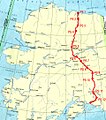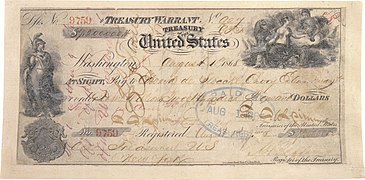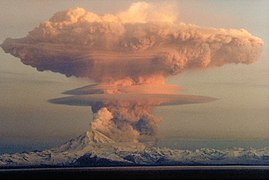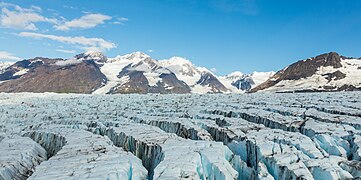Portal:Alaska
 Introduction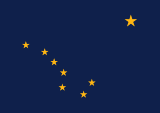   Alaska (/əˈlæskə/ ⓘ ə-LASS-kə) is a non-contiguous U.S. state on the northwest extremity of North America. It borders the Canadian province of British Columbia and the Yukon territory to the east; it shares a western maritime border in the Bering Strait with Russia's Chukotka Autonomous Okrug. The Chukchi and Beaufort Seas of the Arctic Ocean lie to the north and the Pacific Ocean lies to the south. Technically a semi-exclave of the U.S., it is the largest exclave in the world. Alaska is the largest U.S. state by area, comprising more total area than the next three largest states of Texas, California and Montana combined, and is the seventh-largest subnational division in the world. It is the third-least populous and most sparsely populated U.S. state, but is, with a population of 736,081 as of 2020, the continent's most populous territory located mostly north of the 60th parallel, with more than quadruple the combined populations of Northern Canada and Greenland. The state contains the second-largest and largest cities in the United States by area: the state capital of Juneau, and its former capital, Sitka, respectively. The state's most populous city is Anchorage and approximately half of Alaska's residents live within its metropolitan area. Indigenous people have lived in Alaska for thousands of years, and it is widely believed that the region served as the entry point for the initial settlement of North America by way of the Bering land bridge. The Russian Empire was the first to actively colonize the area beginning in the 18th century, eventually establishing Russian America, which spanned most of the current state, and promoted and maintained a native Alaskan Creole population. The expense and logistical difficulty of maintaining this distant possession prompted its sale to the U.S. in 1867 for US$7.2 million (equivalent to $157 million in 2023). The area went through several administrative changes before becoming organized as a territory on May 11, 1912. It was admitted as the 49th state of the U.S. on January 3, 1959. Abundant natural resources have enabled Alaska—with one of the smallest state economies—to have one of the highest per capita incomes, with commercial fishing, and the extraction of natural gas and oil, dominating Alaska's economy. U.S. Armed Forces bases and tourism also contribute to the economy; more than half the state is federally-owned land containing national forests, national parks, and wildlife refuges. It is among the most irreligious states, one of the first to legalize recreational marijuana, and is known for its libertarian-leaning political culture, generally supporting the Republican Party in national elections. The Indigenous population of Alaska is proportionally the second highest of any U.S. state, at over 15 percent, after only Hawaii. (Full article...) Entries here consist of Good and Featured articles, which meet a core set of high editorial standards.
Maurice Robert "Mike" Gravel (/ɡrəˈvɛl/ grə-VELL; May 13, 1930 – June 26, 2021) was an American politician and writer who represented Alaska in the United States Senate from 1969 to 1981 as a member of the Democratic Party. He ran for president twice (U.S. presidential nominations). Born and raised in Springfield, Massachusetts, by French-Canadian immigrant parents, Gravel moved to Alaska in the late 1950s, becoming a real estate developer and entering politics. He served in the Alaska House of Representatives from 1963 to 1967, and also became Speaker of the Alaska House. Gravel was elected to the U.S. Senate in 1968. As a senator, Gravel became nationally known for his forceful, but unsuccessful, attempts to end the draft during the War in Vietnam, and for putting the Pentagon Papers into the public record in 1971. He conducted an unsuccessful campaign for the Democratic nomination in 1972 for Vice President of the United States, and then played a crucial role in obtaining Congressional approval for the Trans-Alaska pipeline in 1973. He was re-elected to the Senate in 1974, but was defeated in his bid for a third term in the primary election in 1980. (Full article...)TopicsCategoriesSelected article -The Alaska Purchase saw the Russian Empire transfer Alaska to the United States for a sum of $7.2 million in 1867 (equivalent to $129 million in 2023). On May 15 of that year, the United States Senate ratified a bilateral treaty that had been signed on March 30, and American sovereignty became legally effective across the territory on October 18. During the first half of the 18th century, Russia had established a colonial presence in parts of North America, but few Russians ever settled in Alaska. Alexander II of Russia, having faced a catastrophic defeat in the Crimean War, began exploring the possibility of selling the state's Alaskan possessions, which, in any future war, would be difficult to defend from the United Kingdom. To this end, William H. Seward, the U.S. Secretary of State at the time, entered into negotiations with Russian diplomat Eduard de Stoeckl towards the United States' acquisition of Alaska after the American Civil War. Seward and Stoeckl agreed to a treaty for the sale on March 30, 1867. At a cost of $0.36 per acre, the United States had grown by 586,412 sq mi (1,518,800 km2). Reactions to the Alaska Purchase among Americans were mostly positive, as many believed that Alaska would serve as a base to expand American trade in Asia. Some opponents labeled the purchase as "Seward's Folly" or "Seward's Icebox" as they contended that the United States had acquired useless land. Nearly all Russian settlers left Alaska in the aftermath of the purchase; Alaska would remain sparsely populated until the Klondike Gold Rush began in 1896. Originally organized as the Department of Alaska, the area was renamed the District of Alaska in 1884 and the Territory of Alaska in 1912, ultimately becoming the modern-day State of Alaska in 1959. (Full article...)Selected picture -General imagesThe following are images from various Alaska-related articles on Wikipedia.
Recognized content
Featured articlesGood articles
Featured pictures
Former featured pictures
Related Portals
Related WikiProjectsState facts
State symbols:
Tasks
Associated WikimediaThe following Wikimedia Foundation sister projects provide more on this subject:
Discover Wikipedia using portals |























